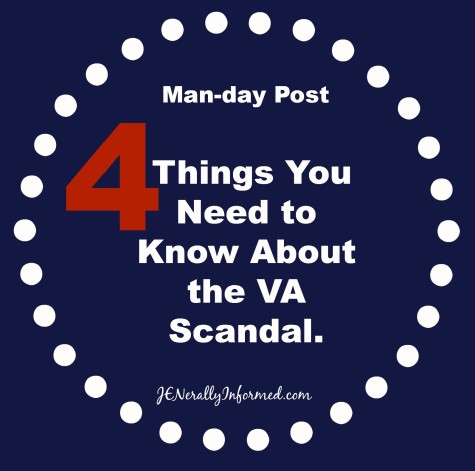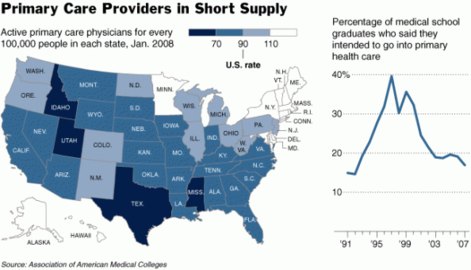By now most of you have heard about the VA (Veterans Administration) hospital scandal. There are a lot of elements that go into it, but the bulk of the problem that is being considered now was the use of fake “wait lists” to schedule medical appointments for veterans who use the public VA hospital system created for their care. This consisted of two lists. One they shared with the public and with their review boards that signaled short wait times and showed that “all was well,” along with a second real wait list that delayed veterans from needed services for months or sometimes years. During the delay, many veterans died from diseases and complications that could have been diagnosed and treated had they received timely care.
 The scandal started just up the road from me in Phoenix where it was discovered that over 1700 veterans were completely left off the active treatment list, resulting in an estimated 40 of them dying because of the oversight. In the days that followed, an independent Inspector General review confirmed the findings and showed that the abuses were systematic and intentional. On June 30th a new report showed that under an initial audit 64% of wait times were incorrectly reported at all VA facilities in general becoming the last straw that led to VA Secretary Eric Shinseki to resign.
The scandal started just up the road from me in Phoenix where it was discovered that over 1700 veterans were completely left off the active treatment list, resulting in an estimated 40 of them dying because of the oversight. In the days that followed, an independent Inspector General review confirmed the findings and showed that the abuses were systematic and intentional. On June 30th a new report showed that under an initial audit 64% of wait times were incorrectly reported at all VA facilities in general becoming the last straw that led to VA Secretary Eric Shinseki to resign.
Obviously there is a lot to this story. What I want to focus on are a few things that either aren’t being reported or are being under-reported when it comes to this news item.
1. The VA has received a funding infusion for the past several years.
On CBS’s “Face the Nation,” panelist Katrina vanden Heuvel made the claim, “Congress has cut funding, has slashed funding, for veterans’ benefits over these last years. If anyone should be offering their resignation, maybe the Congress should.” This type of statement was common with politicians and pundits soon after the VA scandal come to light. It is also verifiably untrue. Funding has grown from 73.1 billion in 2006 to 163.9 billion beginning in 2015. Obviously, due to our recent wars and medical cost inflation, the exact increase isn’t more than twice as much, however it still far outstrips the status quo, and has definitely not been “cut.” There are many issues to blame for the crisis, but lack of funding isn’t the highest on the list.
2. The VA, and the United States as a whole, is suffering from a doctor shortage.
I have a friend who is a primary care physician, when he graduated from Brown University Medical School, the percentage of primary care physicians was around 45%. When he went back to attend commencement a few years ago, the percentage had fallen to 4% There are many reasons for that, chief among them are the costs to attend school and complete an internship balanced out against the possible pay scale and dangers of regulation and litigation. Overall it is a much easier life to become a plastic surgeon over a primary care physician or an obstetrician. This is becoming true of the population of physicians as a whole in the US, and becomes significantly more acute as it filters down to the VA hospital system.
VA primary care doctors doctors are supposed to be responsible for about 1,200 patients each, but many now treat upward of 2,000. That is an insane number. It is estimated that the VA is about 400 doctors short of where they need to be. The problem is that there is little expectation based on what they can offer a to a shrinking pool of qualified applicants that those positions can ever be filled. This brings me back to a chilling quote by my doctor friend. “Just because you have medical coverage, doesn’t mean you will have medical care. They are two entirely separate things.”
3. The bonuses.
Consider this: Only one in 435 VA executives in 2012 received a less than fully satisfactory review. Bonuses are doled out by a performance review board comprised mainly of VA executives. That seems pretty circular, no? This gets to part of the problem in the system, rather than becoming tools for accountability, the culture of bonuses causes people to look the other way when bad things happen for fear of losing a bonus. This is entirely responsible for the fake wait lists. The Director responsible for the extremely troubled Phoenix VA system received a bonus of $9,345 due to her innovations including “significant improvements in removing some of the access concerns, the long waits, moving to the electronic wait list.” Of course that was by lying through her teeth as untreated veterans died, but ten grand is ten grand.
Look, I believe that bonuses can be used to guarantee better performance, but the closed loop of government bureaucracy has proven time and time again, that unless there is strict and independently reviewed accountability and measurement, we end up with all carrot and no stick. This means that many abuses and problems are covered up rather than addressed.
4. These problems don’t appear to be happening in every VA facility.
 The facility here in Tucson, which I have worked for as a contractor from time to time doesn’t appear to be experiencing any of these issues. The veterans that I know seem to think that they are getting good care. Obviously my personal experience doesn’t cover the entire spectrum, and some of the issues such as doctor shortages loom large, but it would be unfair to tar everyone with the same brush. Sometimes good people shine despite adverse circumstances. One solution that has been put forward is to provide vouchers for veterans to use in the private system when they are not experiencing good outcomes with their VA hospital. In those places where veterans are happy with their care, the vouchers would probably not be used, except in cases where an entire family wants to have the same family doctor (we should probably facilitate this anyway.) In places where veterans are struggling to find good care, the voucher would allow them to receive faster care and would also be a strong indicator that a particular hospital is failing. My understanding, however, is that such a common sense solution would gore several oxes, so there is little likelihood of it happening. That’s too bad. We can do better. Especially when making sure that our Veterans are cared for.
The facility here in Tucson, which I have worked for as a contractor from time to time doesn’t appear to be experiencing any of these issues. The veterans that I know seem to think that they are getting good care. Obviously my personal experience doesn’t cover the entire spectrum, and some of the issues such as doctor shortages loom large, but it would be unfair to tar everyone with the same brush. Sometimes good people shine despite adverse circumstances. One solution that has been put forward is to provide vouchers for veterans to use in the private system when they are not experiencing good outcomes with their VA hospital. In those places where veterans are happy with their care, the vouchers would probably not be used, except in cases where an entire family wants to have the same family doctor (we should probably facilitate this anyway.) In places where veterans are struggling to find good care, the voucher would allow them to receive faster care and would also be a strong indicator that a particular hospital is failing. My understanding, however, is that such a common sense solution would gore several oxes, so there is little likelihood of it happening. That’s too bad. We can do better. Especially when making sure that our Veterans are cared for.





